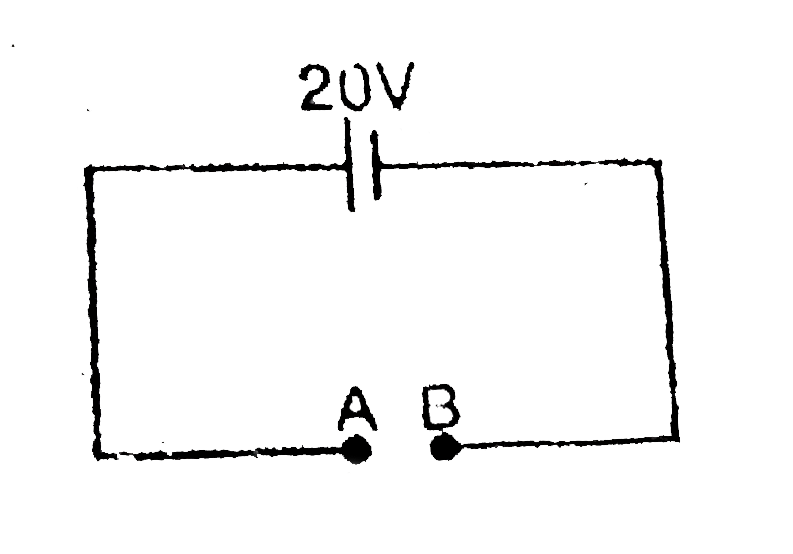In an ac circuit the potential differences across an inductance and resistance joined in series are, respectively, 16 V and 20 V. The total potential difference across the circuit is
A
20.0V
B
25.6V
C
31.9V
D
53.5V
Video Solution
Text Solution
The correct Answer is:B
V=√V2R+V2L=√(20)2+(16)2=√656=25.6V
|
Topper's Solved these Questions
- ALTERNATING CURRENTBOOK - A2ZCHAPTER - ALTERNATING CURRENTEXERCISE - Power In Ac Circuits
21 Videos
- ALTERNATING CURRENTBOOK - A2ZCHAPTER - ALTERNATING CURRENTEXERCISE - Problems Based On Mixed Concepts
40 Videos
- ALTERNATING CURRENTBOOK - A2ZCHAPTER - ALTERNATING CURRENTEXERCISE - Connected With Ac
42 Videos
- ATOMIC PHYSICSBOOK - A2ZCHAPTER - ATOMIC PHYSICSEXERCISE - Section D - Chapter End Test
30 Videos
Similar Questions
Knowledge Check
In an ac circuit the potential differences across an inductance and resistance joined in series are, respectively, 16 V and 20 V. The total potential difference across the circuit is
A20 VB25.6VC31.9VD53.5VIn an AC circuit the potential differences across an inductance and resistance joined in series are respectively 16 V and 20 V. The total potential difference of the cource is
A20.0 VB25.6 VC31.9 VD53.5 VIn the circuit, the potential difference across PQ will be nearest to
 A9.6 VB6.6 VC4.8 VD3.2 V
A9.6 VB6.6 VC4.8 VD3.2 V
In the circuit, the potential difference across PQ will be nearest to

View SolutionIn the circuit, the potential difference across PQ will be nearest to

View SolutionIn the circuit, the potential difference across PQ will be nearest to

View SolutionIn the given circuit diagram, potential difference across 2Ω resistance is

View SolutionIn the shown circuit, what is the potential difference across A and B

View Solution

